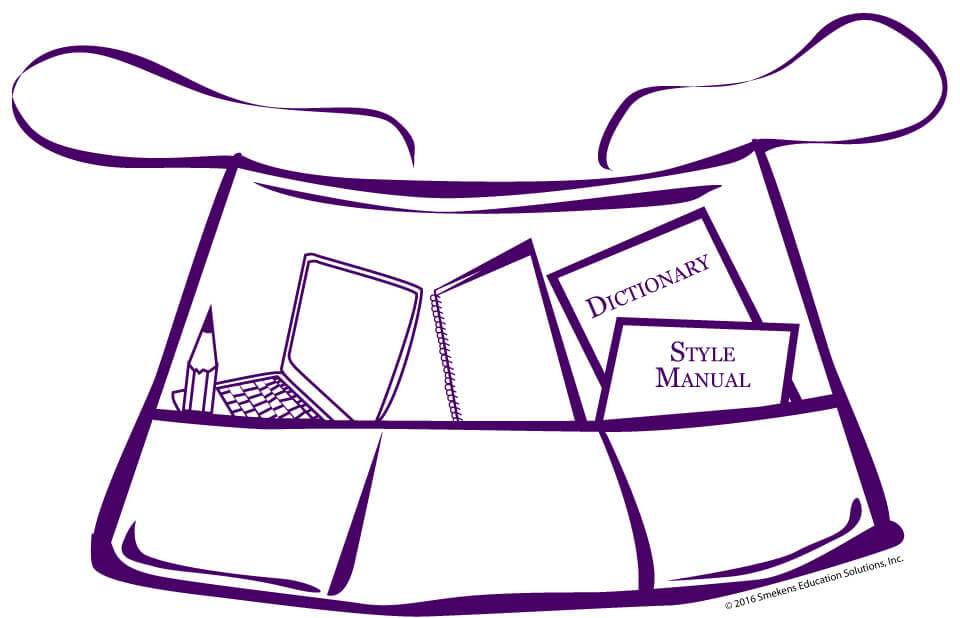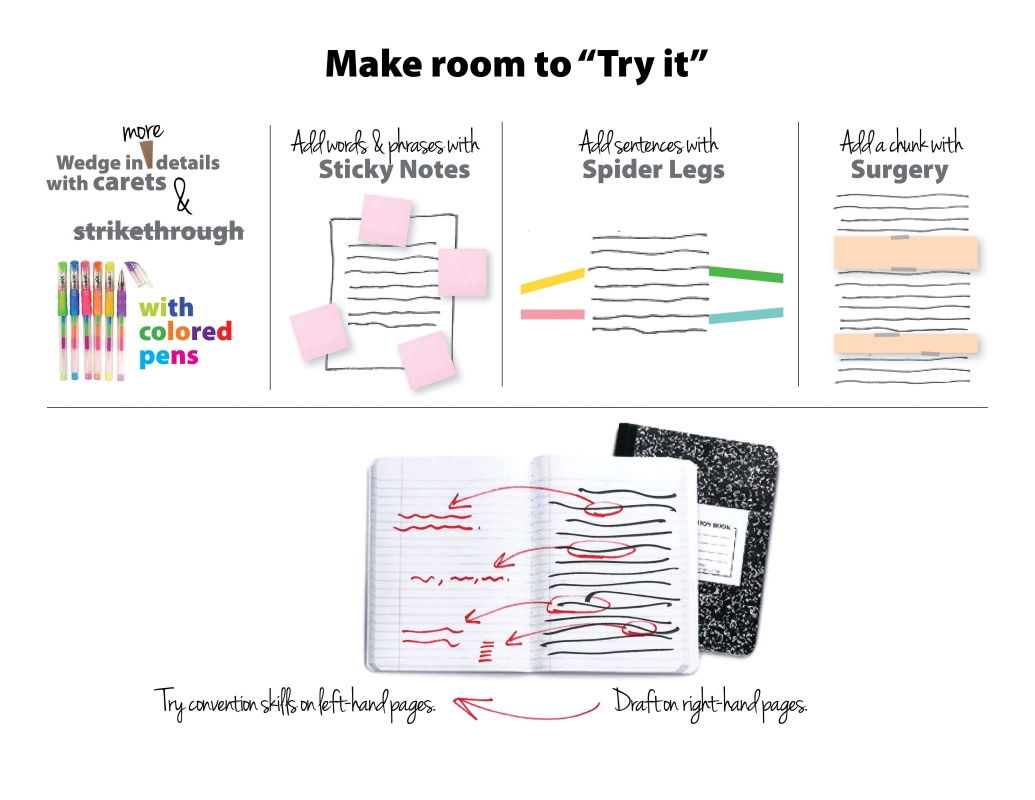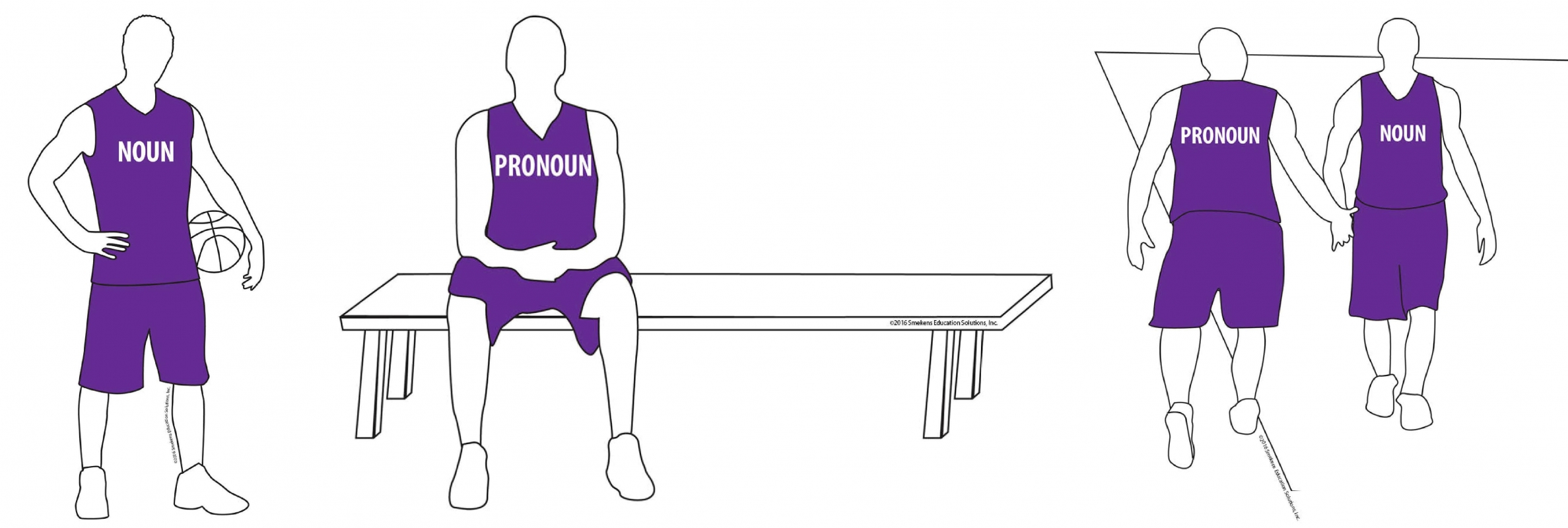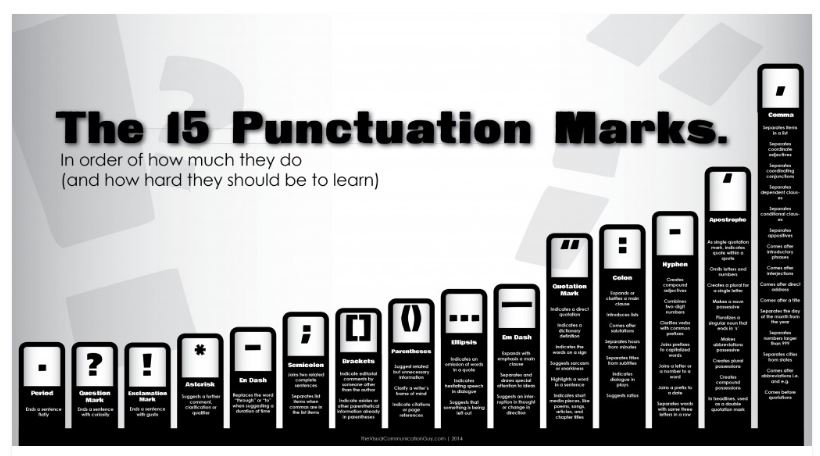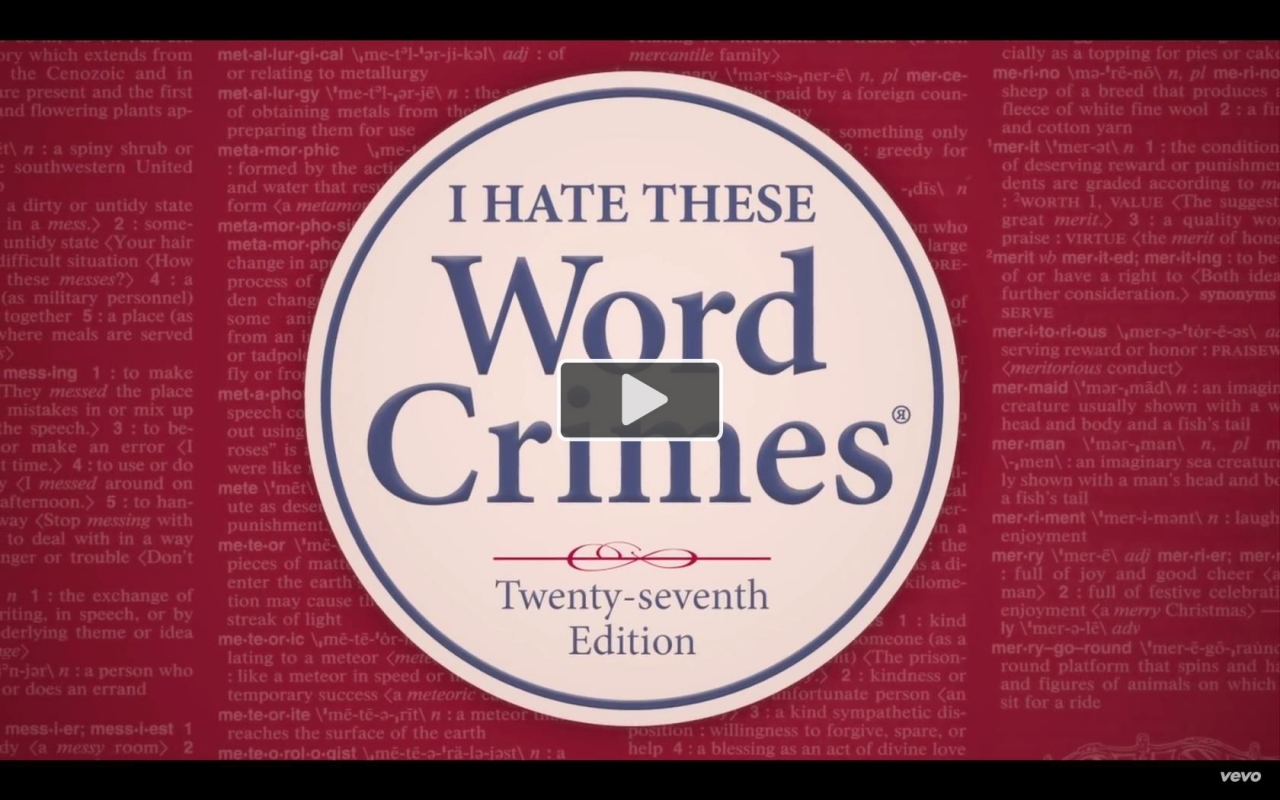Literacy Retreat 2016
SECRET SITE
Raise the Bar on Conventions

Convention expectations include appropriate use of grammar skills and mechanics.
- CCSS for Writing include L1 (grammar skills) and L2 (mechanic skills).
- Indiana Standards for K-5 and 6-12 Writing include 6.1 (grammar skills) and 6.2 (mechanic skills).
Introduce students to the trait of conventions (and the other traits of writing).
- Introduce the tool box or tool-belt icons (young writers’ tool belt, older writers’ tool belt).
- Bailly Elementary (Chesterton, IN) kindergarten teacher Maria Bachuchin created a life-size tool box with actual tools tagged with convention skills.
- Primary teachers could introduce Calvin Conventions, too. (View an example lesson in the video below.)

Plan a multi-day mini-lesson series to include a gradual release of responsibility. Use the progression of Notice it/Name it, Try it, Apply it. Download the handout referenced in this video clip from the Dynamic Mini-Lessons in Writing workshop.
Teach a writing skill within a 4-step mini-lesson. Access a planning template to ensure the four steps are embedded within your instruction.

- Make a connection.
- Name the skill.
- Reveal mentor text and study the skill for patterns. (For specifics see “Prepare Mentor Text Examples” video below. For suggested mentor text per skill, see Trait Trackers.)
- Explain the skill’s purpose or function (10 common purposes conventions perform in writing).
- Compare the purpose to a trigger.
- Start an anchor chart.
- Practice noticing and naming the skill within additional mentor text.
- As needed, massage student attempts while clarifying their understanding.
- As needed, update the anchor chart.
- Close the lesson and reveal an appropriate writing-time task.
- View a Day 1 “Notice it & Name it” mini-lesson example (Juggling Nouns & Pronouns).
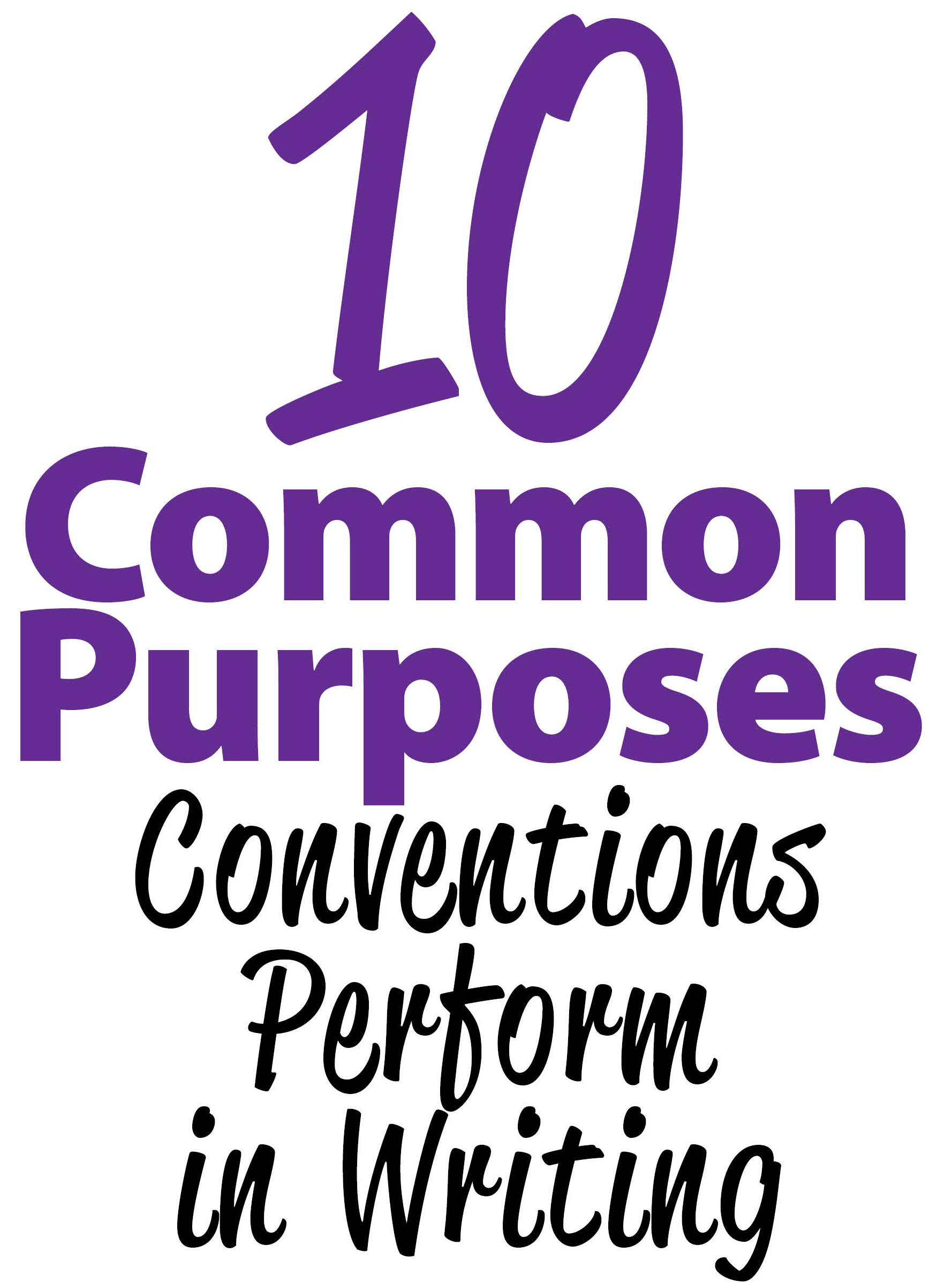

- Remind students of the skill, its purpose, and the mentor text examples from Day 1.
- Prepare to “try” the skill within a previous writing (e.g., all-class writing, personal writing, anchor paper). This includes Thinking Aloud about WHY you would include the skill. Finding a place (WHEN and WHERE in the writing) that the skill could be incorporated. Modeling HOW to imitate the skill via a Think Aloud.
- Provide students a low-risk and quick opportunity to experience the skill orally.
- Support/Massage student attempts while clarifying their understanding.
- Update the anchor chart, as needed.
- Close the lesson and reveal an appropriate writing-time task. (Download a list of “Try it” activities. The video below provides suggestions on how students can make room for these revisions and edits in previous writings.)
- View a Day 2 “Try it” mini-lesson example (Choosing Adjectives).

- Remind students of the skill, its purpose, and the mentor text examples from Days 1-2.
- Crack open the writing process by creating text in front of the students. Frist, identify a topic/content for a short quick write. Then, consider WHY you would include the skill. And finally, Think Aloud about HOW to incorporate the skill into the message.
- Provide students a low-risk and quick opportunity to experience the skill.
- Support/Massage student attempts.
- Update the anchor chart to honor new learning.
- Close the lesson and reveal an appropriate writing-time task.

- Expect this convention to be applied accurately within first drafts and corrected in the editing stage.
- Encourage primary students to apply basic sentence conventions when composing the first draft.
- Teach students that they must reread the first draft for minor edits regardless if there will be a final draft.
- Entice students to read their writing multiple times for different convention skills. Xray Editing includes the use of coordinating glasses and colored pens to conduct a focused edit for certain skills.
- Look for ways to make peer editing fun.
- For more self and peer-editing strategies, check out the “Conduct Focused Edits” video below.
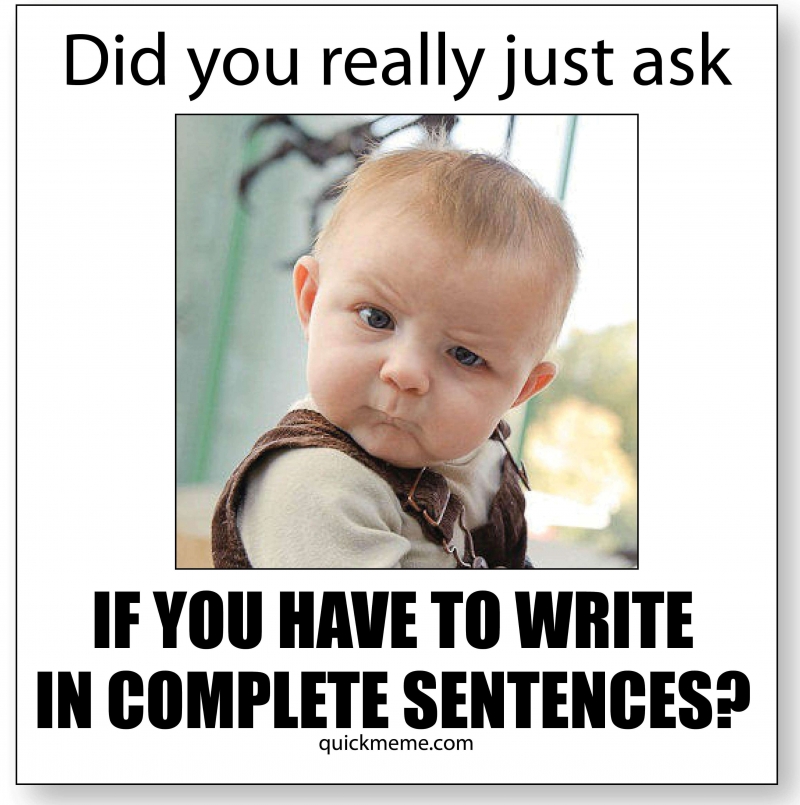


Kristina’s lesson went LONG! She should have stopped after the first interaction with the dog photos. Her 15 minutes was up! But, she (and the kids) were so excited, so she didn’t stop. The video below is the students’ second interaction during the same mini-lesson:
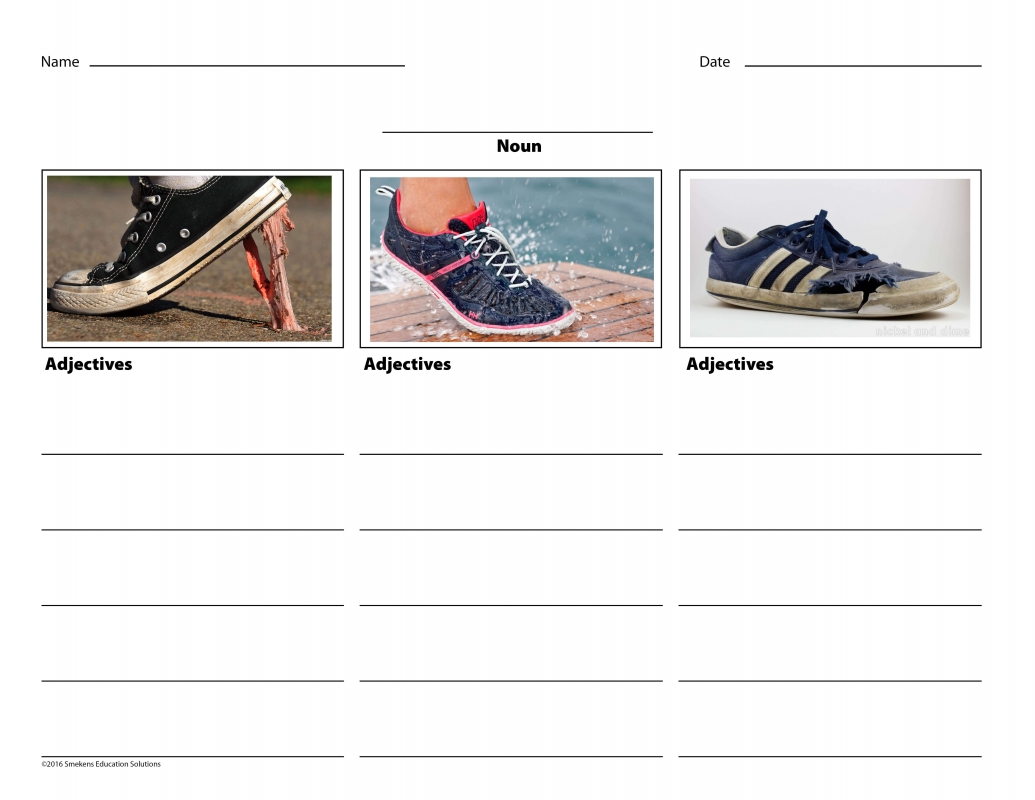

Nouns & Pronouns
Adjectives & Adverbs
Verbs
Preps, Conjunctions, & Appositives
Sentences
Presentation & Spacing
BACON PUNCTUATION & MORE
At www.thevisualcommunicationguy.com there are many practical resources for conventions punctuation in particular! Here are three of Kristina’s favorite links:


